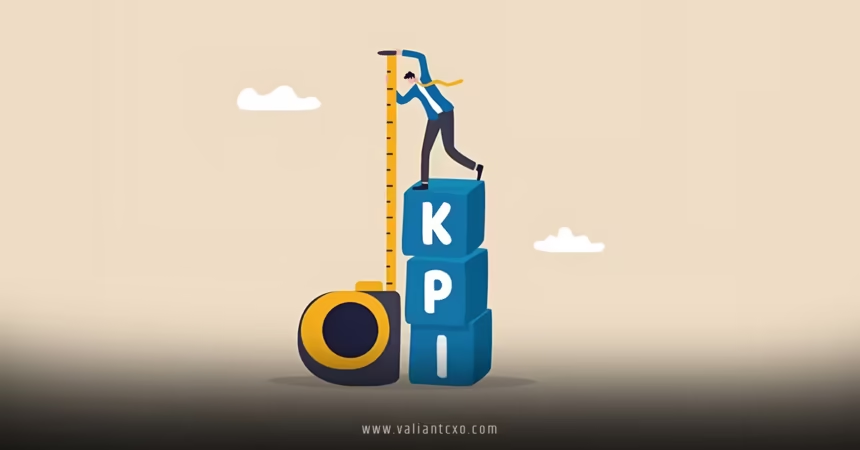Key performance indicators for SaaS company growth are the heartbeat of any software-as-a-service business aiming to scale smartly and sustainably. Imagine running a marathon without a watch or a map—how would you know if you’re on pace or even heading in the right direction? That’s where KPIs come in. They’re the metrics that tell you whether your SaaS is sprinting toward success or stumbling in the dark. In this guide, we’ll dive deep into the essential KPIs that drive growth, why they matter, and how you can use them to steer your company toward long-term profitability. Whether you’re a startup founder or a seasoned CEO, understanding these metrics is your ticket to making data-driven decisions that fuel growth.
Why KPIs Are the Compass for SaaS Growth
Running a SaaS company is like navigating a ship through stormy seas. You need a reliable compass to guide you, and that’s exactly what key performance indicators for SaaS company growth provide. These metrics aren’t just numbers—they’re insights into your business’s health, customer satisfaction, and financial viability. By tracking the right KPIs, you can spot trends, identify bottlenecks, and make strategic moves before small issues become big problems. But here’s the kicker: not all KPIs are created equal. Focusing on the wrong ones is like chasing a mirage—it wastes time and resources. Let’s explore the must-have KPIs that truly move the needle for SaaS companies.
The Role of KPIs in Strategic Decision-Making
Why do key performance indicators for SaaS company growth matter so much? Because they give you clarity in a world full of noise. SaaS businesses live and die by their ability to attract, retain, and monetize customers. KPIs help you measure what’s working and what’s not. Are your customers sticking around? Is your marketing budget delivering results? Are you growing fast enough to stay competitive? These questions can’t be answered with gut feelings—they need data. By anchoring your strategy in KPIs, you’re not just guessing; you’re making informed choices that align with your growth goals.
Core Key Performance Indicators for SaaS Company Growth
Let’s get to the meat of it: the specific KPIs that every SaaS company should obsess over. These metrics cover customer acquisition, retention, revenue, and operational efficiency—everything you need to keep your business humming.
1. Monthly Recurring Revenue (MRR)
If there’s one KPI that’s the lifeblood of any SaaS company, it’s Monthly Recurring Revenue (MRR). Think of MRR as the steady heartbeat of your subscription model. It’s the predictable revenue you can count on each month from your active subscribers. To calculate MRR, multiply the number of paying customers by the average revenue per user (ARPU). Why does this matter for key performance indicators for SaaS company growth? Because MRR shows whether your business is scaling or stalling. A rising MRR means you’re attracting new customers or upselling existing ones, while a flat or declining MRR signals trouble.
Want to take it a step further? Break MRR into categories like new MRR (from new customers), expansion MRR (from upgrades), and churned MRR (lost from cancellations). This gives you a clearer picture of where your growth is coming from—or where it’s leaking.
2. Customer Acquisition Cost (CAC)
Ever wonder how much it costs to win a single customer? That’s where Customer Acquisition Cost (CAC) comes in. This KPI measures the total cost of acquiring a new customer, including marketing, sales, and onboarding expenses, divided by the number of customers acquired. For example, if you spend $10,000 on marketing in a month and gain 100 new customers, your CAC is $100 per customer.
Why is CAC a cornerstone of key performance indicators for SaaS company growth? Because it tells you whether your acquisition strategy is sustainable. A high CAC might mean you’re burning cash on ineffective campaigns, while a low CAC suggests you’re getting a great return on investment. Pair CAC with MRR to calculate the CAC-to-MRR ratio—a healthy ratio is typically 1:3, meaning you recover your acquisition cost within three months of revenue.
3. Customer Lifetime Value (CLV)
If CAC is about what you spend to get customers, Customer Lifetime Value (CLV) is about what they’re worth to you over time. CLV estimates the total revenue a customer will generate during their relationship with your company. To calculate it, multiply your ARPU by the average customer lifespan (in months). For instance, if your ARPU is $50 and customers stay for 24 months, your CLV is $1,200.
CLV is a game-changer among key performance indicators for SaaS company growth because it helps you understand the long-term value of your customer relationships. A high CLV means your customers are loyal and profitable, while a low CLV could indicate retention issues or a product that doesn’t deliver enough value. Aim for a CLV-to-CAC ratio of at least 3:1 to ensure you’re not spending more to acquire customers than they’re worth.
4. Churn Rate
Churn is the silent killer of SaaS companies. It’s the percentage of customers who cancel their subscriptions over a given period. To calculate churn rate, divide the number of customers who left by the total number of customers at the start of the period. For example, if you start with 1,000 customers and lose 50 in a month, your churn rate is 5%.
Why is churn a critical part of key performance indicators for SaaS company growth? Because losing customers is like trying to fill a bucket with a hole in it. Even a small increase in churn can derail your growth, especially if you’re spending heavily to acquire new customers. Aim for a churn rate below 5% annually for B2B SaaS or 10% for B2C SaaS. Dig into why customers are leaving—whether it’s poor onboarding, lack of value, or bad customer support—and address those issues to keep churn low.
5. Net Promoter Score (NPS)
How likely are your customers to recommend your product to others? That’s what Net Promoter Score (NPS) measures. Customers rate your company on a scale of 0 to 10, and you categorize them as Promoters (9-10), Passives (7-8), or Detractors (0-6). Subtract the percentage of Detractors from the percentage of Promoters to get your NPS.
NPS is a powerful addition to key performance indicators for SaaS company growth because it gauges customer satisfaction and loyalty. A high NPS (above 50) means your customers love your product and are likely to spread the word, driving organic growth. A low NPS signals trouble—unhappy customers are more likely to churn and less likely to refer others. Use NPS surveys to gather feedback and improve your product or service.
Advanced KPIs for Scaling SaaS Companies
Once you’ve got the basics down, it’s time to level up with advanced KPIs that provide deeper insights into your growth trajectory.
6. Annual Recurring Revenue (ARR)
While MRR is great for short-term insights, Annual Recurring Revenue (ARR) gives you the big picture. ARR is simply MRR multiplied by 12, representing the revenue you can expect over a year. For example, if your MRR is $50,000, your ARR is $600,000. ARR is especially useful for B2B SaaS companies with longer contract terms, as it smooths out monthly fluctuations.
Why include ARR in your key performance indicators for SaaS company growth? Because it helps you plan for the long term, attract investors, and benchmark your performance against competitors. A steadily growing ARR is a sign that your business is on solid footing.
7. Expansion Revenue
Not all growth comes from new customers. Expansion revenue tracks the additional revenue generated from existing customers through upsells, cross-sells, or price increases. For example, if a customer upgrades from a $50/month plan to a $100/month plan, that $50 difference is expansion revenue.
This KPI is a hidden gem among key performance indicators for SaaS company growth because it shows how well you’re maximizing the value of your current customer base. High expansion revenue means your customers see enough value to spend more, which is often more cost-effective than acquiring new customers. Focus on delivering exceptional value and offering tiered pricing plans to boost this metric.
8. Customer Retention Rate
While churn tells you how many customers you’re losing, Customer Retention Rate (CRR) tells you how many you’re keeping. Calculate CRR by subtracting your churn rate from 100%. For example, if your churn rate is 5%, your CRR is 95%.
Retention is a cornerstone of key performance indicators for SaaS company growth because loyal customers are the backbone of any subscription business. A high CRR means your product is sticky and your customers are satisfied. Improve retention by investing in customer success teams, offering proactive support, and continuously enhancing your product based on user feedback.
Operational KPIs to Optimize Efficiency
Growth isn’t just about revenue and customers—it’s also about running a lean, efficient operation. These operational KPIs help you fine-tune your processes.
9. Sales Cycle Length
How long does it take to close a deal? Sales Cycle Length measures the average time from initial contact to signed contract. For B2B SaaS companies, this could range from a few weeks to several months, depending on your target market.
This KPI is vital for key performance indicators for SaaS company growth because a lengthy sales cycle can slow your growth and increase CAC. Shorten your sales cycle by streamlining your sales process, qualifying leads effectively, and providing clear value propositions.
10. Customer Support Response Time
When a customer has a problem, how quickly do you respond? Customer Support Response Time measures the average time it takes to reply to customer inquiries. Fast response times (ideally under an hour) lead to happier customers and lower churn.
Why does this matter for key performance indicators for SaaS company growth? Because customer support is often the first touchpoint for frustrated users. A slow response can turn a minor issue into a cancellation. Invest in a robust support system, like live chat or a ticketing platform, to keep this KPI in check.
How to Track and Analyze KPIs Effectively
Now that you know the key performance indicators for SaaS company growth, how do you actually track them? The answer lies in tools and processes. Use analytics platforms like Mixpanel for user behavior, HubSpot for sales and marketing, or Baremetrics for subscription metrics. Set up dashboards to monitor your KPIs in real-time and schedule regular reviews to spot trends. Don’t just collect data—act on it. If your churn rate spikes, dig into customer feedback. If your CAC is creeping up, reassess your marketing channels.
Common Mistakes to Avoid with SaaS KPIs
Even the best KPIs can lead you astray if you’re not careful. Here are some pitfalls to watch out for:
- Focusing on Vanity Metrics: Metrics like website traffic or social media followers might look impressive, but they don’t directly tie to growth. Stick to KPIs that impact revenue and retention.
- Ignoring Context: A high churn rate might not be a disaster if you’re targeting a low-value, high-turnover market. Always interpret KPIs in the context of your business model.
- Overcomplicating Things: Tracking too many KPIs can overwhelm your team. Start with the core metrics (MRR, CAC, CLV, churn, NPS) and expand as needed.
Conclusion: Harnessing KPIs for Sustainable SaaS Growth
Key performance indicators for SaaS company growth are more than just numbers—they’re your roadmap to building a thriving, scalable business. By focusing on metrics like MRR, CAC, CLV, churn, and NPS, you can gain a clear understanding of your company’s health and make smarter decisions. Don’t just track these KPIs—use them to tell a story about where your business is headed and what you need to do to get there. Whether you’re tweaking your pricing, improving customer support, or optimizing your marketing, these KPIs will guide you toward sustainable growth. So, roll up your sleeves, dive into the data, and start steering your SaaS company toward success!
FAQs
1. What are the most important key performance indicators for SaaS company growth?
The most critical key performance indicators for SaaS company growth include Monthly Recurring Revenue (MRR), Customer Acquisition Cost (CAC), Customer Lifetime Value (CLV), Churn Rate, and Net Promoter Score (NPS). These metrics provide insights into revenue, customer acquisition efficiency, retention, and satisfaction.
2. How often should I track key performance indicators for SaaS company growth?
You should track core KPIs like MRR and churn monthly to stay on top of trends. Other KPIs, like NPS or sales cycle length, can be reviewed quarterly to assess long-term performance and customer satisfaction.
3. How can I reduce churn as part of key performance indicators for SaaS company growth?
To reduce churn, focus on improving onboarding, offering proactive customer support, and regularly updating your product based on user feedback. Analyzing why customers leave can also help you address pain points effectively.
4. Why is CLV important for key performance indicators for SaaS company growth?
Customer Lifetime Value (CLV) shows how much revenue a customer generates over their lifetime, helping you assess the profitability of your acquisition efforts. A high CLV indicates strong customer retention and product value.
5. Can small SaaS startups benefit from tracking key performance indicators for SaaS company growth?
Absolutely! Even small startups can use KPIs like MRR, CAC, and churn to understand their growth trajectory, optimize limited resources, and make data-driven decisions to scale efficiently.
Read More:valiantcxo.com


